 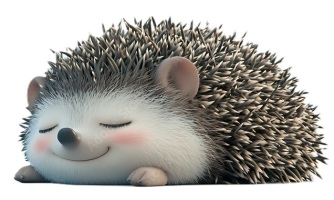 Hibernation allows animals to survive low temperatures and periods of time without food, by entering a deep sleep
for the entire winter. When an animal hibernates, they decrease their body temperature, metabolic rate, heart rate, and respiratory rate. This energy reduction allows the animal to survive without eating or drinking when food becomes scarce during the winter.
Hibernation allows animals to survive low temperatures and periods of time without food, by entering a deep sleep
for the entire winter. When an animal hibernates, they decrease their body temperature, metabolic rate, heart rate, and respiratory rate. This energy reduction allows the animal to survive without eating or drinking when food becomes scarce during the winter. Animals that hibernate eat extra food during the fall to store up fat before winter begins. When it’s time to hibernate, the animal drops its body temperature by 20 °C or more and slows its heart rate and breathing in order to use less energy. A true hibernator spends most of the winter in a state close to death; in fact, the animal may appear to be dead. The body temperature is close to 0° C and the respiration is only a few breaths per minute. The heartbeat is so slow and gradual as to be barely perceptible. Waking from hibernation uses a lot of energy, so it's only done when necessary, typically every 15 - 30 days to expel waste. When exposed to moderate warmth in the spring, the animal slowly awakens, requiring perhaps an hour or more to reach an alert state. 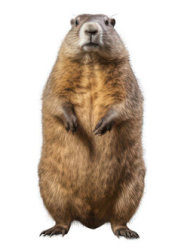 Groundhogs, for example, enter hibernation in late fall and reemerge in March. They hibernate in burrows about a metre deep and up to 20 metres long. As true hibernators, a groundhog's body temperature drops significantly during hibernation - from 37 to a mere 3 degrees Celsius. The groundhog’s burrow is located below the frost line to help them survive the cold winter temperatures. Their breathing slows to only two breaths per minute, and their heart rate drops from 80 to just 5 beats per minute. To prepare, groundhogs eat lots of food in the months leading up to hibernation so that they have fat reserves to burn through the winter. Groundhogs have no need to leave their underground burrows; they have specific 'rooms' that they use for waste, and store food in their burrow for when needed.
Groundhogs, for example, enter hibernation in late fall and reemerge in March. They hibernate in burrows about a metre deep and up to 20 metres long. As true hibernators, a groundhog's body temperature drops significantly during hibernation - from 37 to a mere 3 degrees Celsius. The groundhog’s burrow is located below the frost line to help them survive the cold winter temperatures. Their breathing slows to only two breaths per minute, and their heart rate drops from 80 to just 5 beats per minute. To prepare, groundhogs eat lots of food in the months leading up to hibernation so that they have fat reserves to burn through the winter. Groundhogs have no need to leave their underground burrows; they have specific 'rooms' that they use for waste, and store food in their burrow for when needed.
Among mammals, true hibernators are found only in the orders: 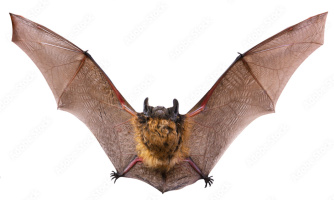 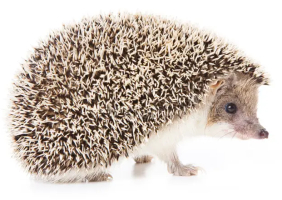 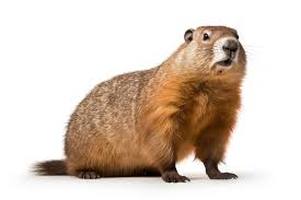 little brown bat hedgehog woodchuck (groundhog) |